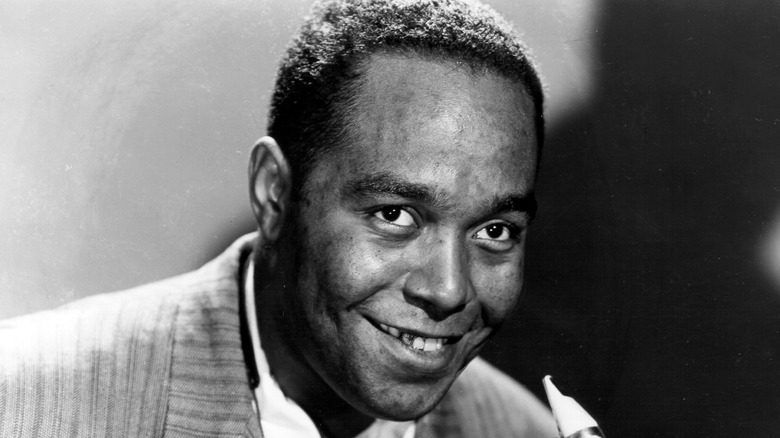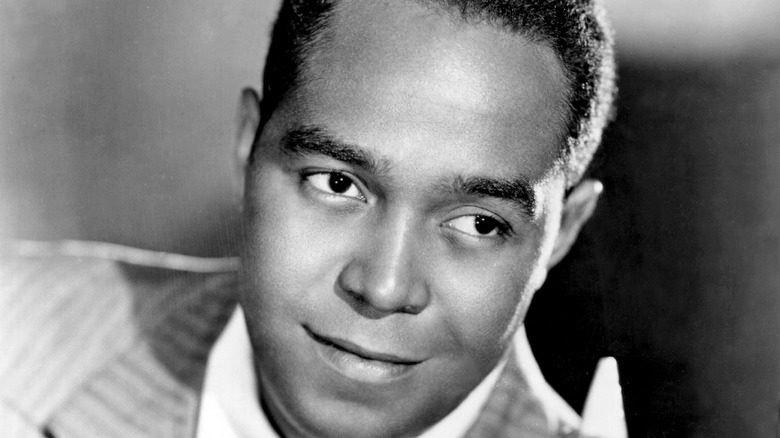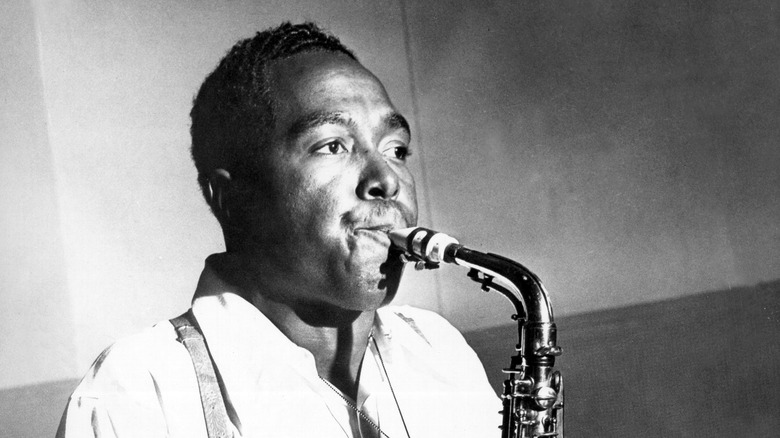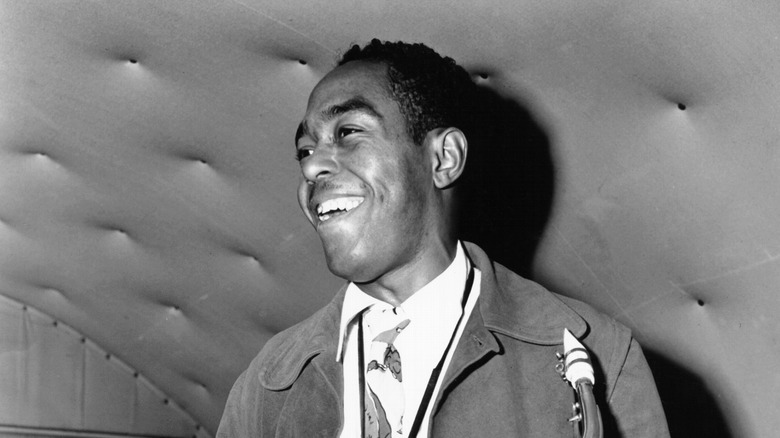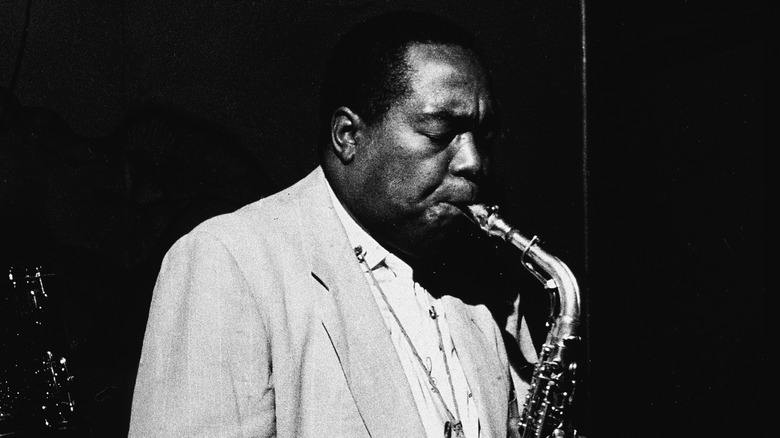The Strange Death Of Charlie Parker
"When Bird was sixteen he looked 38," a club manager once said of jazz pioneer Charlie "Yardbird" Parker (via the New York Post). "He had the oldest-looking face I ever saw." This observation rang true once again upon Parker's death in 1955 at age 34, when, according to the Independent, the coroner who performed his autopsy believed him to be a 60-year-old man.
Parker's weathered face likely had something to do with his decades of heroin use. After using heroin for the first time at age 15 (reports the New York Post), in his drug-centric hometown of Kansas City, Parker developed an addiction that lasted until — and ultimately contributed to — his premature death. While heroin use affected fellow mid-century jazz greats such as Miles Davis and John Coltrane, Parker's use of the drug was especially fervent and especially destructive. "The way he was going with that dope and all, he could only last so long," his friend Jay McShann once said (via The New Yorker).
Parker's 34 years of life were eventful and often bleak, but they had an impact on jazz — and music in general — for good. "He was like a supernova, he just whooshed through the sky, and then was gone," his stepdaughter, Kim Parker, once said (via the Independent). "That fast in the time continuum, just a flash, just a smidge in time."
The death of his daughter seemed to be a breaking point toward his own
On March 4, 1954, Charlie Parker was fired from his gig at Hollywood's Tiffany Club due to a dispute with the club's management, per The Guardian. It was the second time he had been fired that week, a week that would become one of the worst of his life and an indirect catalyst leading to his death.
Two nights later, on March 6, Parker's two-year-old daughter, Pree, died of pneumonia, per the Independent. Parker's reaction involved excessive amounts of alcohol and several intense telegrams sent to his wife. "MY DAUGHTER IS DEAD," the fourth telegram read (via The Guardian). "I KNOW IT. I WILL BE THERE AS QUICK AS I CAN. IT IS VERY NICE TO BE OUT HERE. PEOPLE HAVE BEEN VERY NICE TO ME OUT HERE. I AM COMING IN RIGHT AWAY TAKE IT EASY. LET ME BE THE FIRST ONE TO APPROACH YOU. I AM YOUR HUSBAND. SINCERELY, CHARLIE PARKER."
"Pree's death ... was the downward spiral," Parker's stepdaughter, Kim, said in a 2015 interview with KC Jazz Ambassadors (via Bird Lives). "There was probably a little feeling inside him that he did this to Pree. His drugs and alcohol and all that stuff, that his excesses had somehow poisoned her."
One bleak year passed between the death of his daughter and his own
In the 12 months between his daughter's death and his own, Charlie Parker moved out of New York City for a more settled life, per The Guardian.
But things were as tumultuous as ever: He was drinking alcohol to excess, and after two different arguments with his wife, Chan, he attempted suicide by swallowing iodine, per the Independent. Parker collapsed on the street, got caught up in fights, and was even banned from the club Birdland, which was named after him. He spent two separate stretches of time in the psychiatric unit of New York's Bellevue hospital. He separated from Chan and experienced bouts of homelessness.
The week before Parker died, saxophonist Buddy Tate ran into him on 42nd Street, per The New Yorker. "He was hard to miss, with those out-of-style suits that didn't fit, and those big old wide granddaddy suspenders he always wore," Tate recalled. "When I got close, I saw he was all swollen up. I knew he'd been very sick and in the psychiatric part of Bellevue."
The pair went to a nearby bar to talk. "I'd heard he was so strung out he'd been sleeping on the stand at Birdland and that they'd had to fire him and that he owed the string section ... twenty-five hundred dollars, which he didn't have," Tate said of Parker. "I never saw him again."
Charlie Parker died in March 1955 after laughing at the TV
In the year before his death, Charlie Parker befriended the Baroness Pannonica de Koenigswater, an "eccentric" jazz fan who lived at New York's Stanhope Hotel on Fifth Avenue, per The New Yorker. Parker stopped by the Baroness' apartment for a visit en route to a Boston jazz gig in March 1955. When she offered him a drink, he refused alcohol, opting instead for a glass of water. He was trying to soothe the pain from his stomach ulcer, but he started vomiting blood. After being given antibiotics by the Baroness' doctor and resting for a few days, Parker felt better.
Shortly thereafter, on March 12, Parker was back at the Baroness' apartment, watching people juggling bricks on Tommy Dorsey's television show. He started laughing, choked, and died a minute or two later. The Baroness later claimed to have heard a thunderclap at the precise moment of Parker's death. His official cause of death was pneumonia, but advanced cirrhosis of the liver was another factor, per the Telegraph. He was just 34 years old.
The story of Charlie Parker's death involves some unfortunate aftermath
Following his death, Parker was subject to one final indignity. His ex-wife, Doris, was caught in a dispute with his final partner, Chan, over who had the rights to his body. Parker separated from Doris in 1950, and although he referred to Chan as his wife, they were never legally married.
"Don't let them bury me in Kansas City," his hometown, Parker once told Chan (via the Independent). But he didn't get his wish. After being moved back and forth between locations, Parker's body was buried at the Lincoln Cemetery on the Missouri side of Kansas City, per his mother's wishes, according to the Telegraph. To top it all off, his headstone was engraved with the wrong date, per the Independent.
Still, the location of Parker's grave is just five miles east of the American Jazz Museum, per the Telegraph. An 18-foot bronze bust of his head by sculptor Robert Grahakansim was put in place around the corner in 1999, bearing the words "Bird Lives."
